Top Website Design Companies, web designers for startups, B2B, SMB, enterprise, SaaS and small business. Best Web design agencies in San Francisco (SF), New York (NYC), London, Portland, Los Angeles (LA).
UPDATED: September 1, 2020
There are 644 million active websites on the Internet according to Netcraft. Today having a website is fundamental for any type of businesses. But even these days when we have tens of web builders, local next door marketing agencies and other solutions, we still sometimes need a unique website designed by experts.
We?ve surfed through a few hundred web design companies to help you find the best website designers. Check them out, look at their portfolios, contact them and see who can design a great marketing website for your business.
1. Ramotion
Ramotion is a digital product design agency focused on marketing website design, mobile and web product design (UI/UX), Front-End and Mobile Development. They use ReactJS, Webflow, etc.
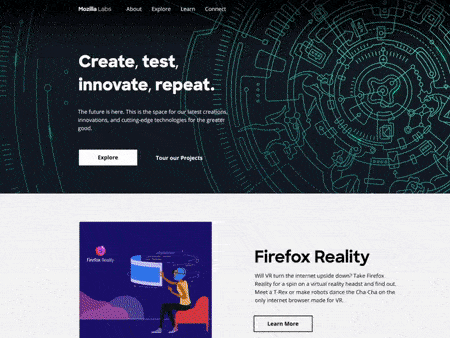
? ramotion.com
?San Francisco, CA
? Top clientsMozilla, Xero, Turo
Online portfolio? Dribbble ?? B?hance ? Github
Social networks? Instagram ? Twitter ? Facebook
2. Jordan Crown
High-end WordPress web design agency & development company
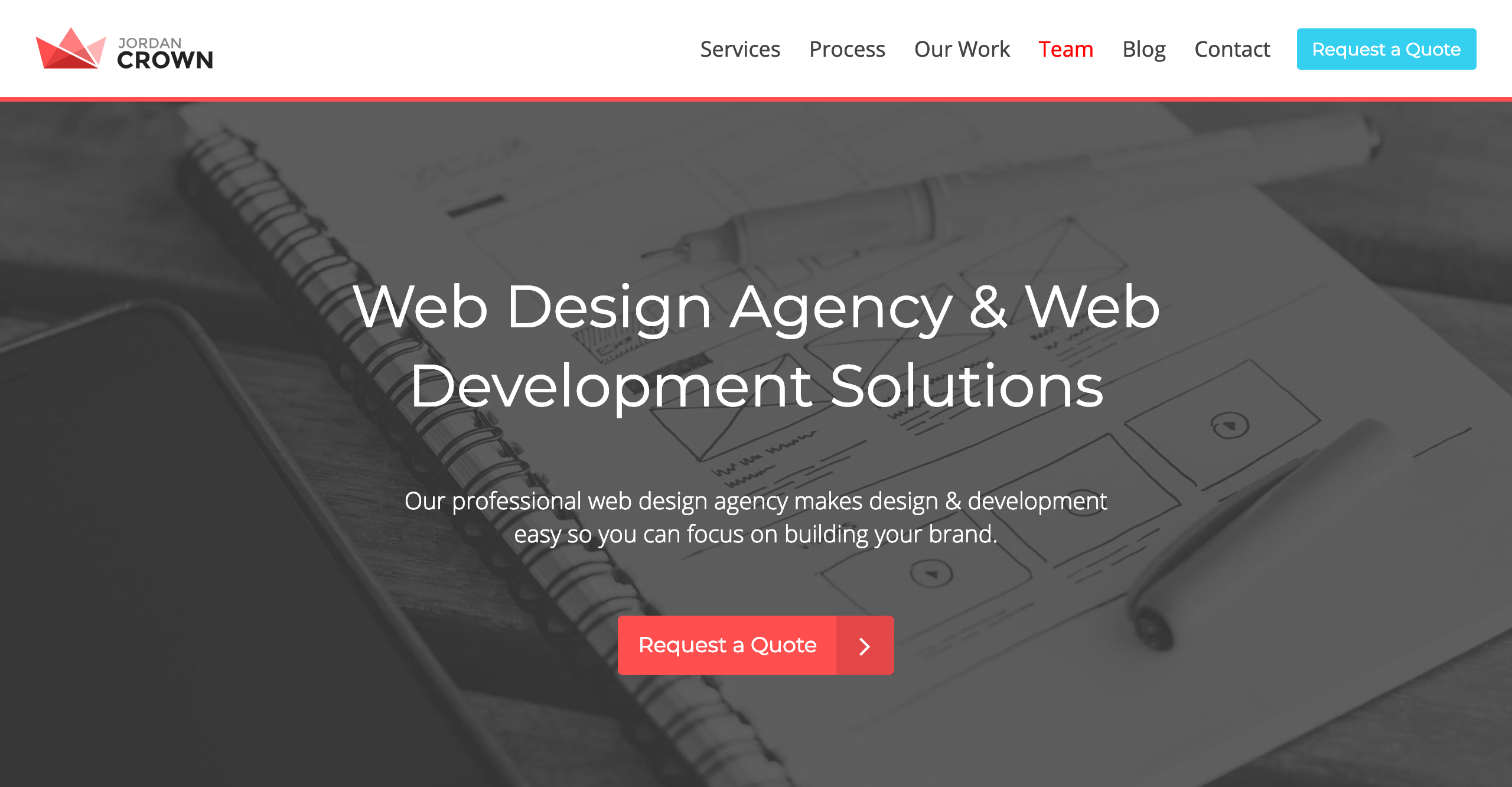
? jordancrown.com?Everett, WA
? Top clientsComcast, T-Mobile, LinkedIn
Social networks? Twitter ? Facebook
3. Blue Fountain Media
Blue Fountain Media merges imagination with technology to deliver human-centric digital experiences that move brands and businesses from now to next. Leveraging data and the potential of digital, our deep expertise in B2B and B2C website design and development
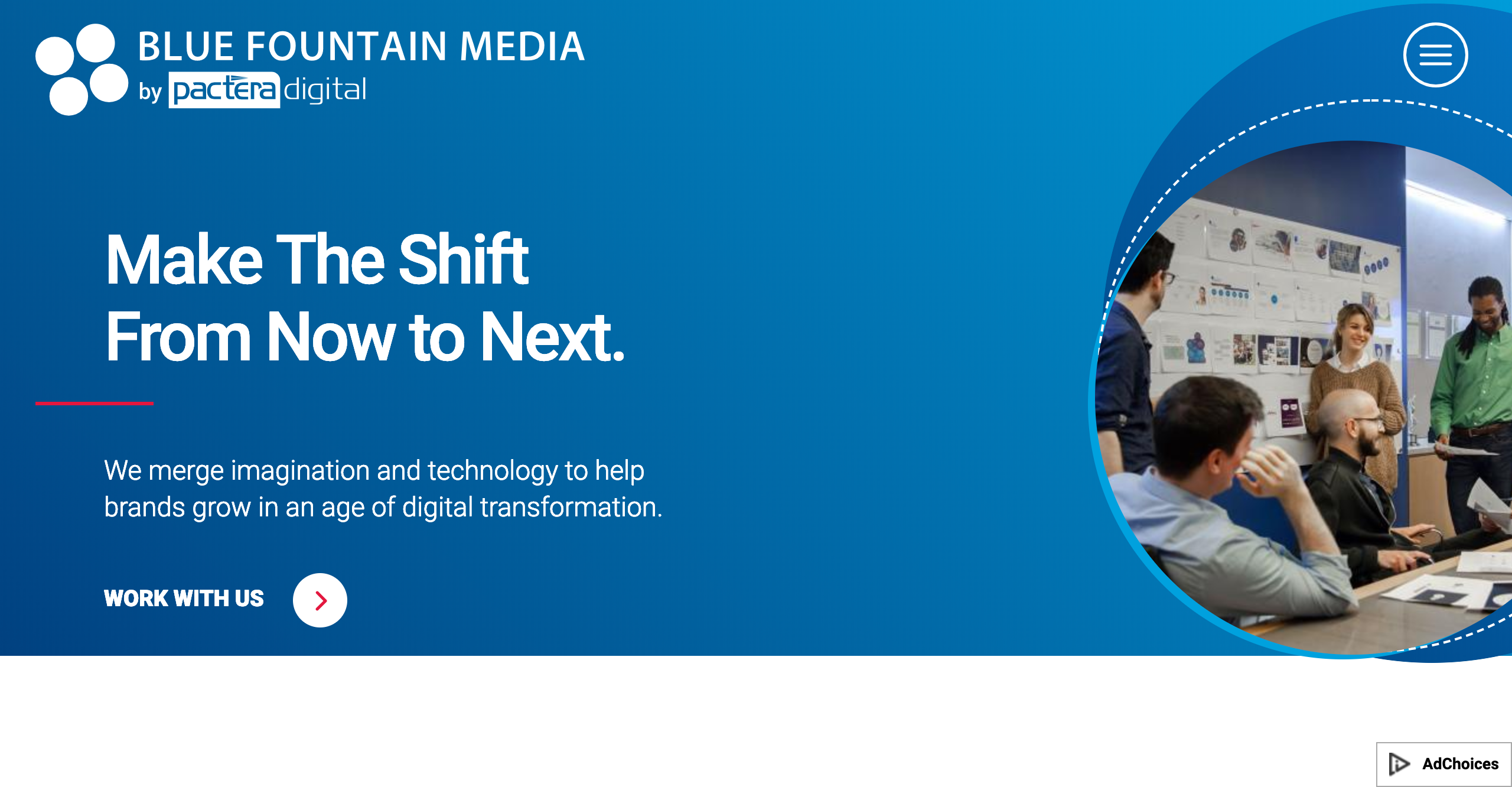
? bluefountainmedia.com?New York, NY
? Top clientsCDK Global, SONY, Microsoft
Social networks? Instagram ? Twitter ? Facebook
4. efelle creative
Full service web design & front-end development company, established in Seattle, WA in 2005.
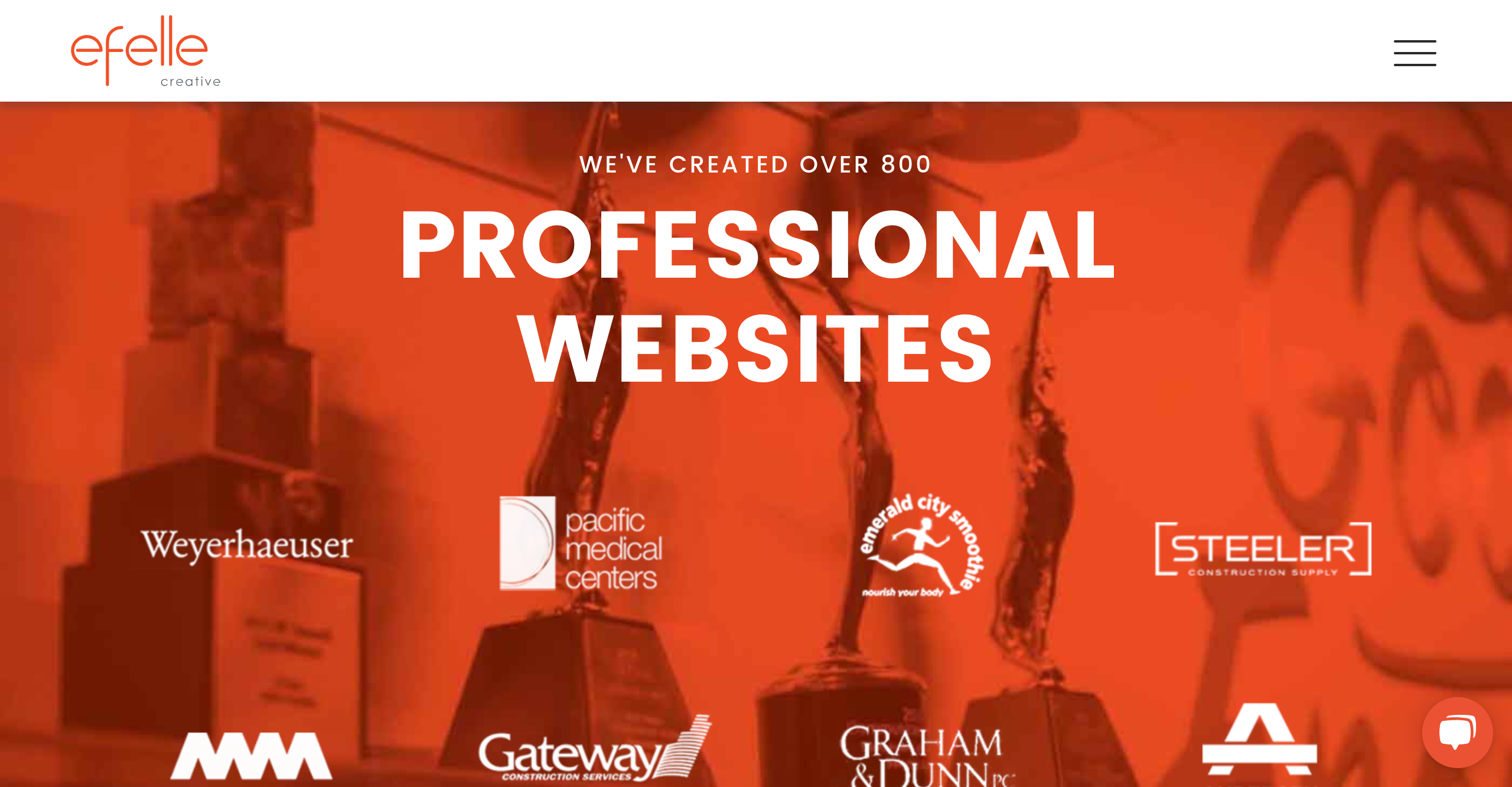
? seattlewebdesign.com?Seattle, WA
? Top clientsBoeing, Philips, University of WA
Social networks? Instagram ? Twitter ? Facebook
5. ThreeSixtyEight
marketing agency that creates unique digital customer experiences through beautiful websites, engaging video content, and measurable brand strategies
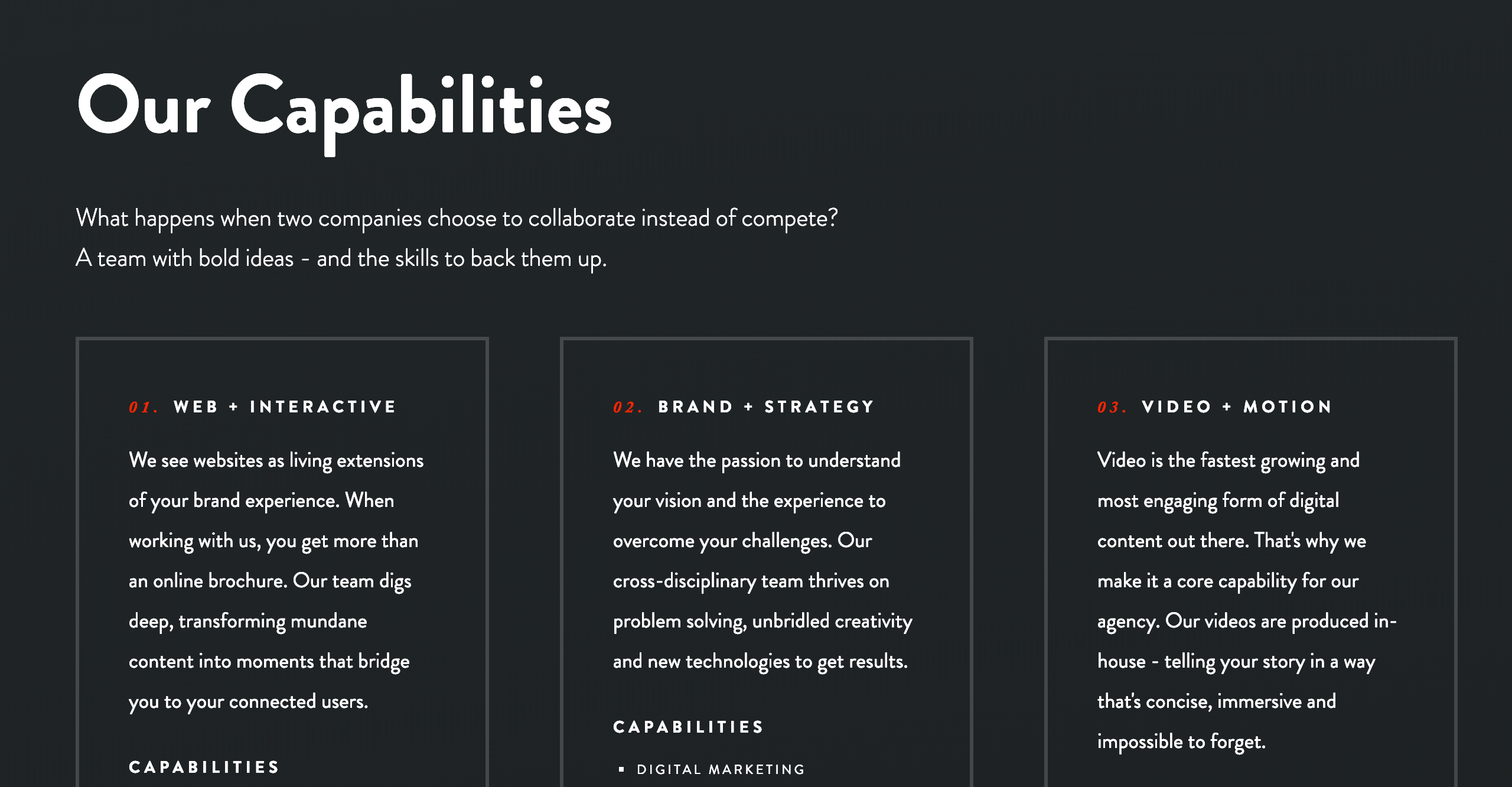
? threesixtyeight.com?Baton Rouge, LA
? Top clientsTED, NASA, Verizon
Online portfolio?? B?hance
Social networks? Instagram ? Twitter ? Facebook
What people say about this list:
FAQ on finding the right web design company
Common questions people ask while looking for an agency
Q: How much does web design cost?A: All website agencies focus on different customers (startups, enterprise) and they use different engagement models (fixed price, project-based, performance-based, time&materials, etc.). Some website are just ?business cards? like marketing websites, others are complex e-commerce platforms. Depending on that, the price varies dramatically. But designing a straightforward 5?7 pages marketing website with a US web firm would cost anywhere beyond $30k+. In our opinion, e-commerce website or web apps have no specific limits in budget and should be treated more like UI/UX design projects with iterative approach with constant improvements. Some meaningful results in key performance indicators of the website can be achieved in a month or so and could start from $25k+.
Q: How web design agency process usually go?A: Following a process for your website design projects has a lot of advantages from improving expectations with clients to better quality end products. Sometimes though ?process? can become something of a dirty word, evoking thoughts of increased paperwork and extra time spent do everything BUT designing the website.
Process doesn?t have to be a pain. Hitting the high points can be enough to reap the benefits, without adding a lot of overhead. Identifying the phases of the project and the key activities with their deliverables will help keep things on track, allow you to communicate expectations and progress with your clients or stakeholders, and make sure nothing gets missed. There are many ways to break things down, 5 phases, 7 steps, or other methods. We?ve organized a basic process into seven main web design steps; define, research, design, develop, test, deliver, and maintain.
DefineEvery web design project should start with goals and objectives. The specific steps here depend on the type of project and whether you are working with clients or internal stakeholders. Typically, however, this comes in the form of interviews with them to discover more about the organization and the purpose of the site.
- What kind of organization is the website representing?
- What do they do?
- Who will be using the site?
- What will they be trying to accomplish by going to your website?
- What are the major features needed?
The purpose of this phase is to identify and document the major goals, scope, features, and even level set on your process and deliverables. The plan should also include roles and responsibilities. For example, will content or graphics be provided by another team? Will the client provide any of these elements?
ResearchNext, you?ll begin looking more at best practices, user needs, and competitive / market research. Figuring out the good, bad, and ugly of trends and competitive websites helps guide your design choices, taking advantage of the best and avoiding the worst.
The data you collect begins to inform your design including what pages, features, and over all architecture of the website. Deliverables for this stage include:
- Brand identity and specs
- Functional requirements
- Site map
- Competitive assessment
- Style Guide
DesignFor designers, this is the area we excel at. That doesn?t mean there is no place for process to keep us on track. Starting with the deliverables from the previous step, you can start moving from low fidelity sketching to higher fidelity mockups and finally publishable assets.
Be sure to include not only design work and deliverables but steps for stakeholder reviews and user testing. This phase can be further broken into iterative steps. It results in deliverables like:
- Mood boards
- Wireframes
- Graphic assets
- Taxonomy
- Design system or reusable assets like menus, buttons, templates
- Content
DevelopOnce the design is complete and user-tested, web development can begin. Even if you aren?t doing this phase yourself, stay engaged. Keeping in close contact with the web development company can help reduce bugs and issues later on. Careful documentation doesn?t always answer all the questions developers have, and occasionally things get interpreted differently than you?ve intended.
TestTesting takes many forms. User testing is complete back in the design phase, a test team probably handles technical testing, but there are still parts of the testing phase you?ll need to handle.
- Functional test: verify that the goals of the site are met, check that it looks right on a variety of browsers, look for unexpected edge case scenarios, and ferret out any inconsistencies, spelling, or other errors.
- User acceptance testing: you?ll likely manage and act as a liaison between the client or stakeholders and other teams
DeliverNow it?s time to go live. Again, likely a different team will be responsible for migrating the site to a live server, but it?s important to stay involved to ensure everything goes smoothly. YOu?ll also be handing off your own deliverables or archiving them for future enhancement or maintenance projects.
- Roll-out plan
- Graphical and other assets
- Maintenance plan
- Specs and documentation
MaintainThe work isn?t done after you deliver the site. Depending on your client or stakeholders you may or may not own this phase. Keeping the website up and running, as well as fresh is essential either way. If you won?t continue to own design elements of the website, make sure your client has everything they need from a technical and design perspective to make updates or fix issues.
SummaryProcesses don?t have to be clunky and time-consuming. For more in-depth information, check out some of the great resources offered by experts like Nielsen-Norman Group.
Q: What are the main locations of the best agencies?A: The tech world today is getting more and more globalized, and lots of key players are becoming remote-friendly. It is related to both their employees, contractors and external agencies they hire. Location makes a much smaller difference now. However, lots of web design companies gathered in the main tech hubs and big developed cities of North America (San Francisco, New York, Los Angeles, Seattle, Austin, Portland, Boston), UK (London, Manchester), Canada (Vancouver, Toronto), Australia (Sydney, Melbourne) and Western European cities like Berlin, Amsterdam, and Paris.
Q: Beyond the list above, how to find and hire web designers online?A: One of the options would be to find them at design community websites like B?hance (by Adobe), Dribbble, Google Search.
Web design tips
Your website is the face of your company or organization. It?s often the primary way a customer or client meets you and decides if they want to do business with you. Lots of people want to include unique interactions, the latest trends, or some other flashy technique. Ultimately though, the users of your website are looking for something simple, with a little personality, that gets the job done. They are visiting your site for information and to complete some task or another. Here are some tips for striking the right balance with classic design and a user focus.
Users Need to Find You
You can have the most beautiful, informative site on the web but if no one can find it, it?s useless.
- Learn a little bit about SEO, or hire an expert to help you out. When people are searching on Google, they are usually looking for something specific. Unless they already know your company, they will be looking for a company that does what you do. Make sure they can find you.
- Use a simple URL for your site, and clear naming conventions for your pages and content. This can help with SEO, but it can also make it easier for people who have heard of you but can?t quite remember all the details to look you up specifically. If your page URLs have underscores, capital letters, abbreviations, or other special characters it?s really hard for your people to remember it, type it correctly, and actually get to your site.
- Establish a social media presence, keep it active, and connect to your site. One marketing company likens this to using the right bait. It isn?t directly SEO, but it helps get your name out there in more places and can drive traffic back to your site.
It Has to Look Good
There has been a significant amount of research on just how quickly visitors to your website spend deciding if they want to stick around. It turns out most people have already formed an opinion based on their first impression within 50 ms. Google even found that sometimes it takes as little as 17 ms. If it is ugly, busy, confusing, or otherwise unappealing at first glance, this first impression influences the user?s opinion of the site and your business. Even if they spend a minute or two scanning the content, they?ll likely go elsewhere. You can find more detailed information on great visual design, but here are the basics.
- Use Pleasing Colors
- Be Smart with White Space
- Keep it Simple Over Flashy
- Include Non-Stock Images and Graphics
Getting Around Must be Brainless
As with the visual design, cues about your content and whether it will meet your visitor?s needs are nearly instinctual, if not necessarily accurate. According to a Nielsen Norman Group article, people searching the web are like foraging animals. The images and words they see first greatly influence whether they are going to stick around to search or navigate further.
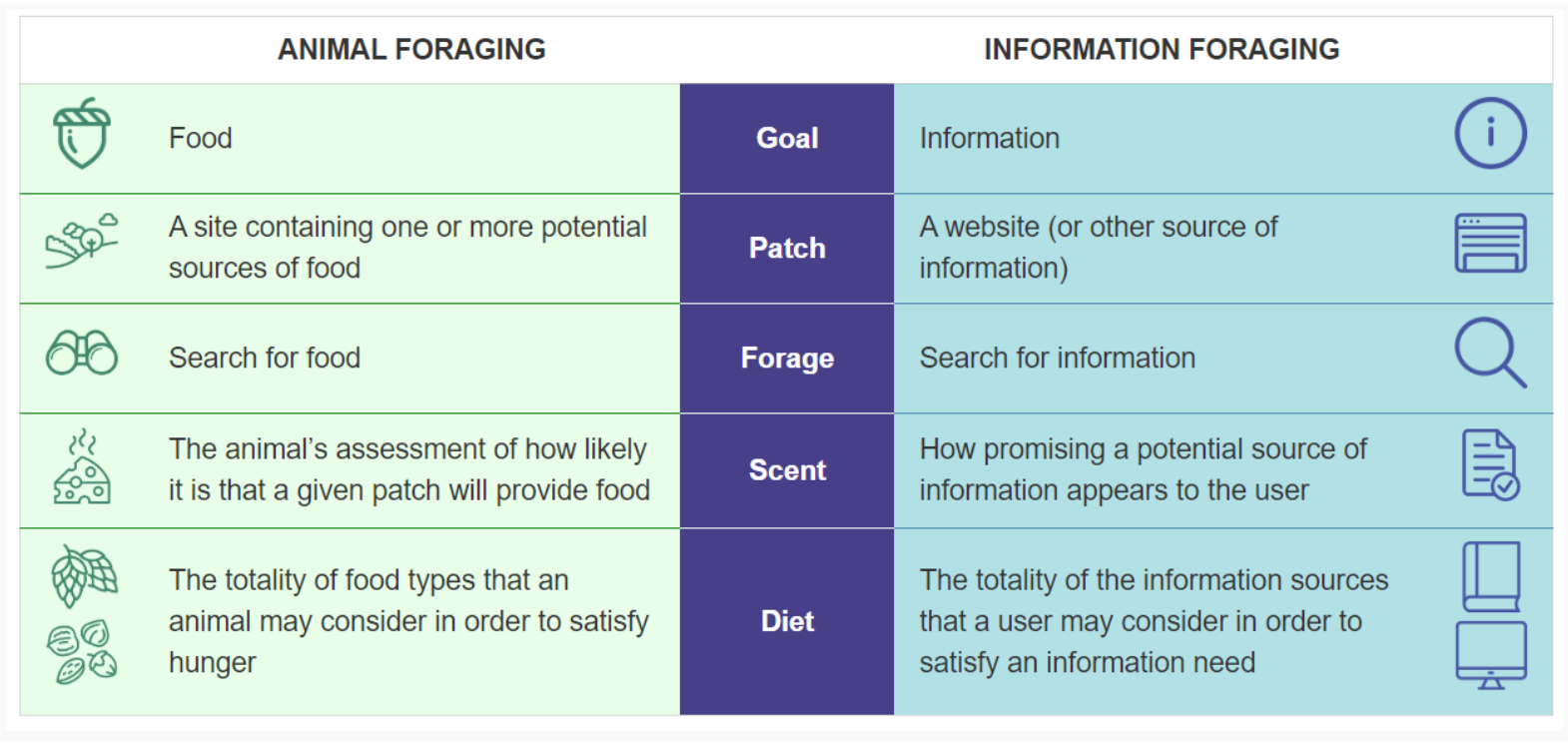 https://www.nngroup.com/articles/information-foraging/
https://www.nngroup.com/articles/information-foraging/
Here are ways to help them see your value.
- Make it absolutely crystal clear what you do/offer. If a potential customer is looking for pots and pans but your home page features lots of pictures of small appliances, that forager?s scent is not going to be very strong.
- Scrolling can be better than clicking, but it?s best to put all the really good stuff at the top. The more clicking or scrolling to be done, the shorter the user?s attention span.
- Navigating your site should be easy. Menu structures need to have short, clear labels, and there shouldn?t be too many options to quickly scan and interpret.
- Including a search option for sites with any breadth is absolutely essential. After all, they searched to find you in the first place right? Many users head right to the search box. This is the quickest way for them to check if your might have want they need.
- Consider hiring an expert in website conversion. If your site is not generating the leads or sales you expect, digging a little deeper into details of calls to action, graphics, and text might be worth a look.
Offer Something Different
Your site can be simple and usable, but still stand out without resorting to hiding navigation in a carousel or raining triangles with parallax scrolling effects.
- Use the visual website design and writing to reflect your brand personality.
- Speak the language of your target users/customers.
- Offer unique content or differentiating products/services.
Many online retailers follow the same basic formula. This is good because users know exactly what to expect, but it doesn?t do much to set any of them apart. We tried Googling ?hiking boot? and got result after result of white backgrounds, left-hand navigation and filtering, and product images.

Vasque does something a little different. If you click a little deeper you find a pretty similar product layout, but they use vivid imagery and a unique, but still simple, layout to draw visitors in.
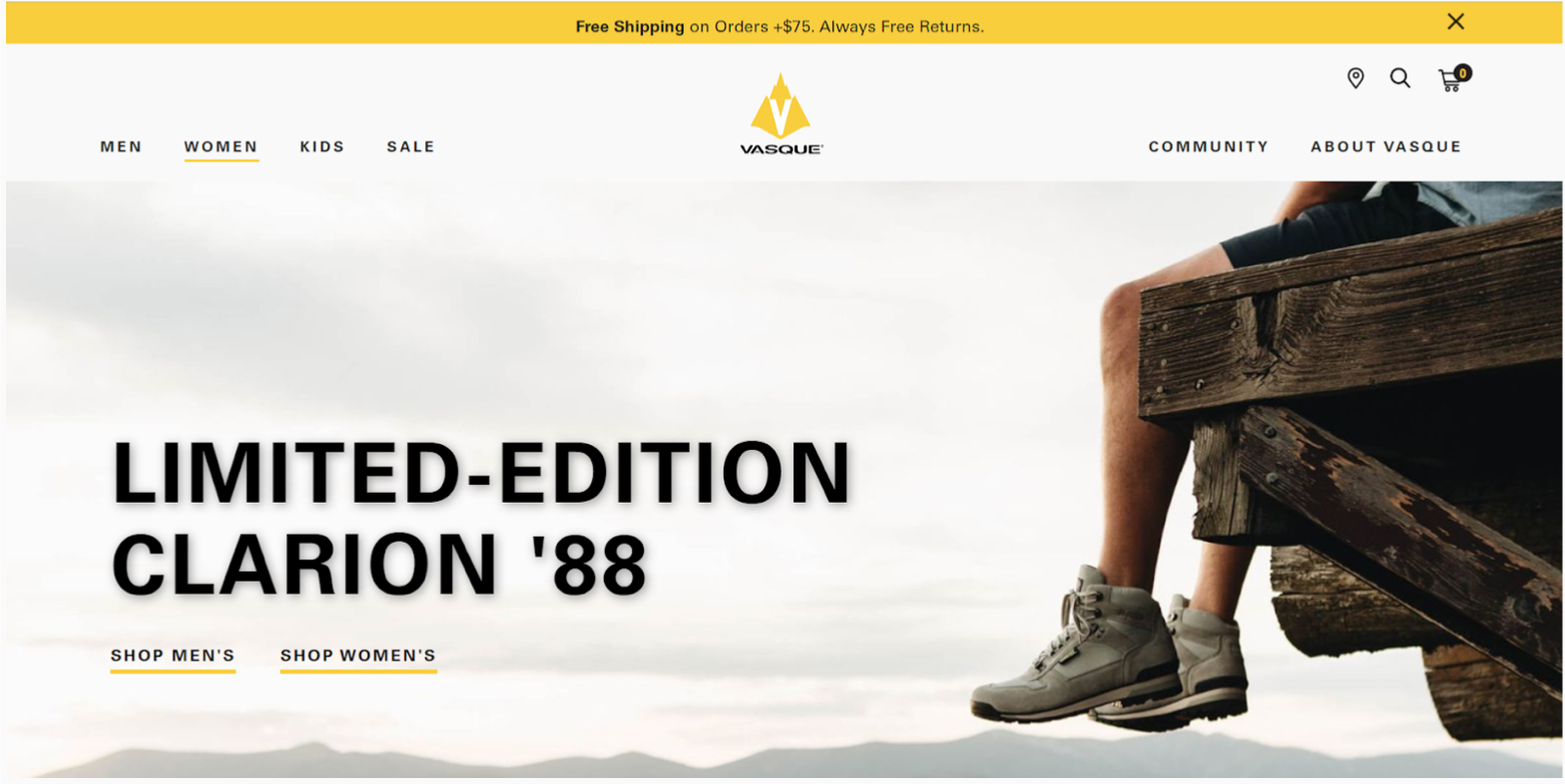 https://www.vasque.com/
https://www.vasque.com/
Conclusion
While there is much more to designing an engaging site, these designer tips should help get you started. With maturity your site can be conversion-optimized, tested, tweaked, and modernized as trends change. Good bones will last forever.
See also our selections of UX design agencies, mobile app development companies and:


